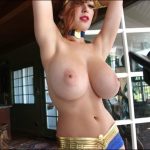
The digital era reshaped how we view beauty, identity, and self-expression. In many ways, the rise of influencer and alternative modeling culture has created a new type of muse—someone who inspires through aesthetics, mood, and personality projected online. These individuals aren’t necessarily celebrities in the traditional sense. Instead, they’ve built communities through authenticity, creativity, and a unique visual presence.
This shift parallels the evolution of online photography platforms. What used to be simple image-sharing has grown into entire ecosystems where creators, models, and audiences interact. These communities often serve as supportive spaces for artistic experimentation, personal storytelling, and collaborative growth.
One platform that taps into this atmosphere-driven model culture is Pinuderest. Rather than focusing on mainstream influencer trends, it highlights personality-driven visual expression—where the mood, tone, and narrative of images matter just as much as the subjects themselves. This gives the community a sense of intimacy and authenticity.
Part of the appeal is that fans aren’t just scrolling; they’re discovering. Whether it’s new photography styles, emotional themes, or experimental aesthetics, digital muse culture thrives when there is room for individuality. This is where audiences find their muses: not in polished perfection, but in real, expressive presence.
As more people seek visual spaces that feel personal and meaningful, these communities will continue to shape online culture. They challenge traditional beauty standards, empower self-expression, and offer a place for visual storytelling to breathe. And that may be the most exciting part—digital muse culture isn’t manufactured by trends—it grows naturally, one aesthetic moment at a time.
See also: Visual Culture (Wikipedia)



